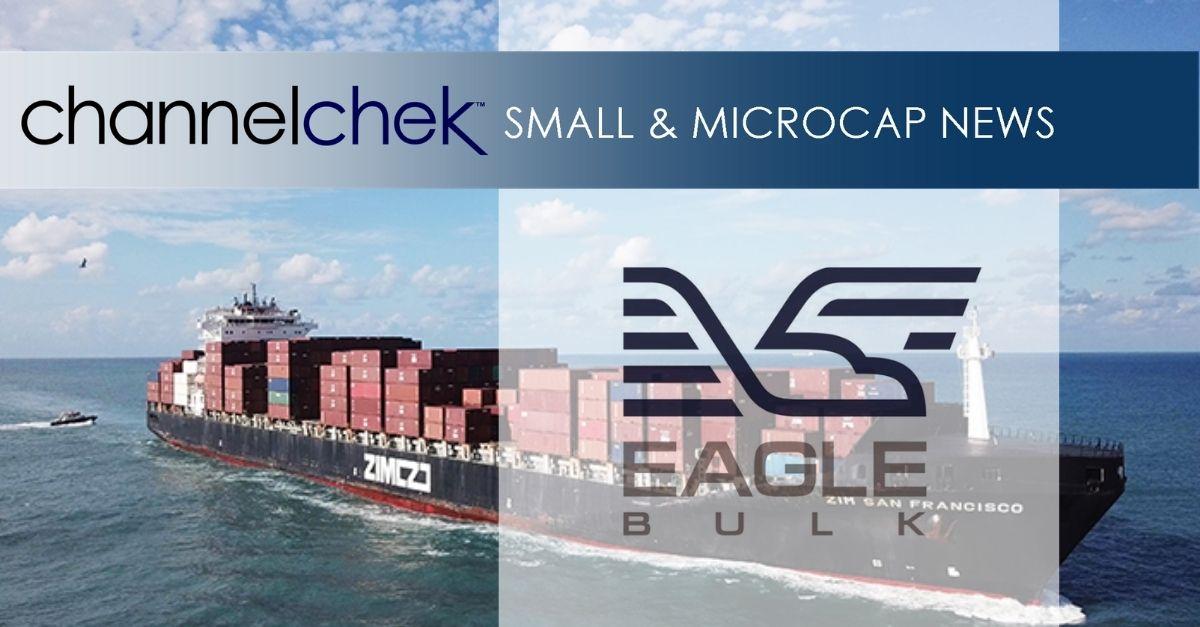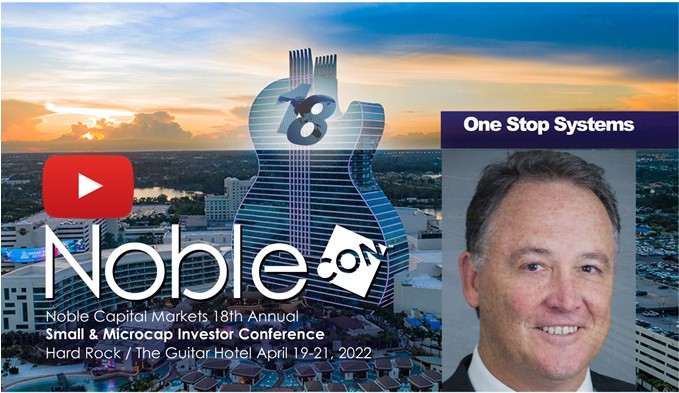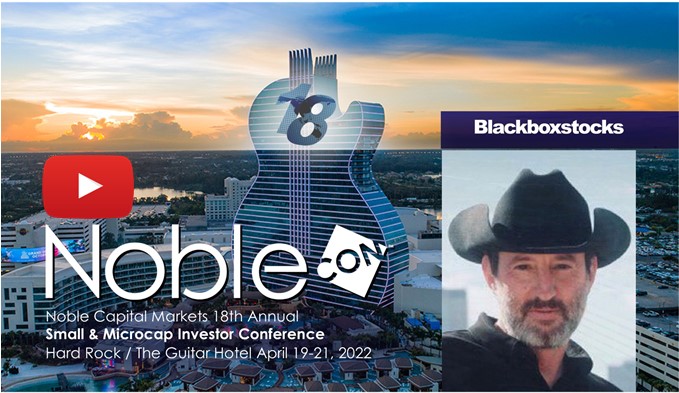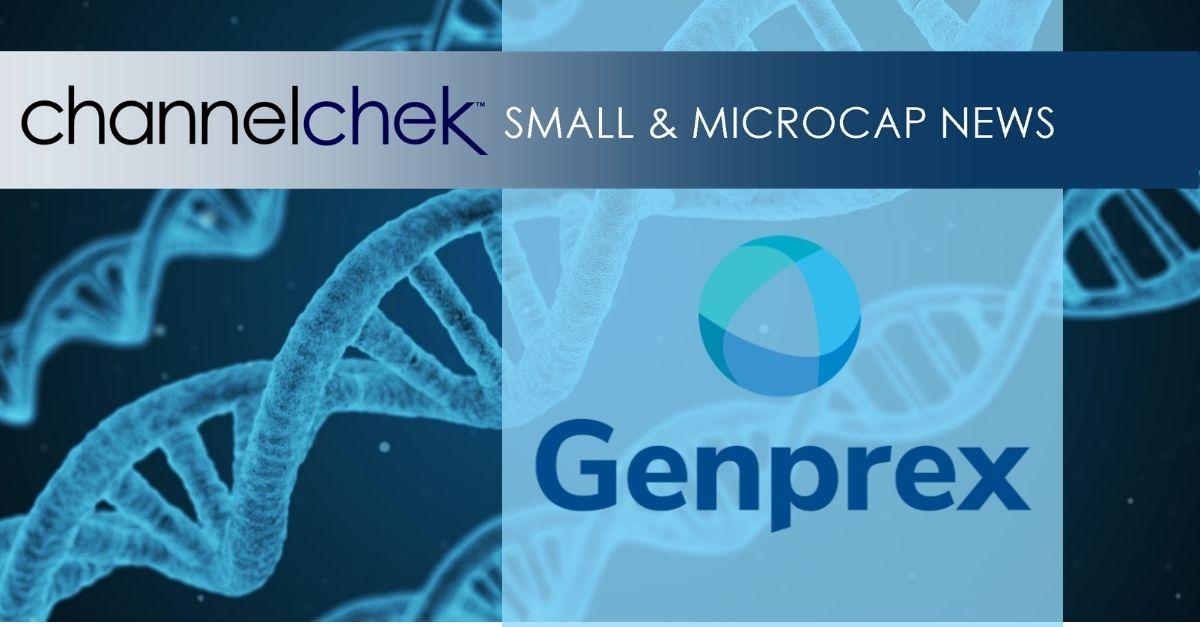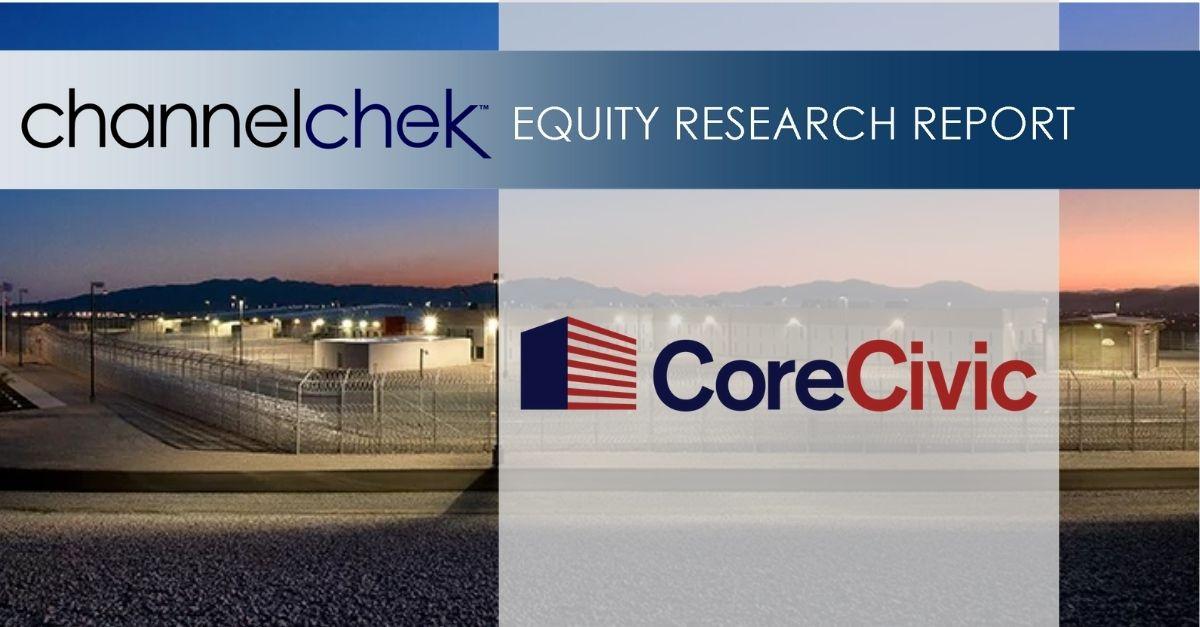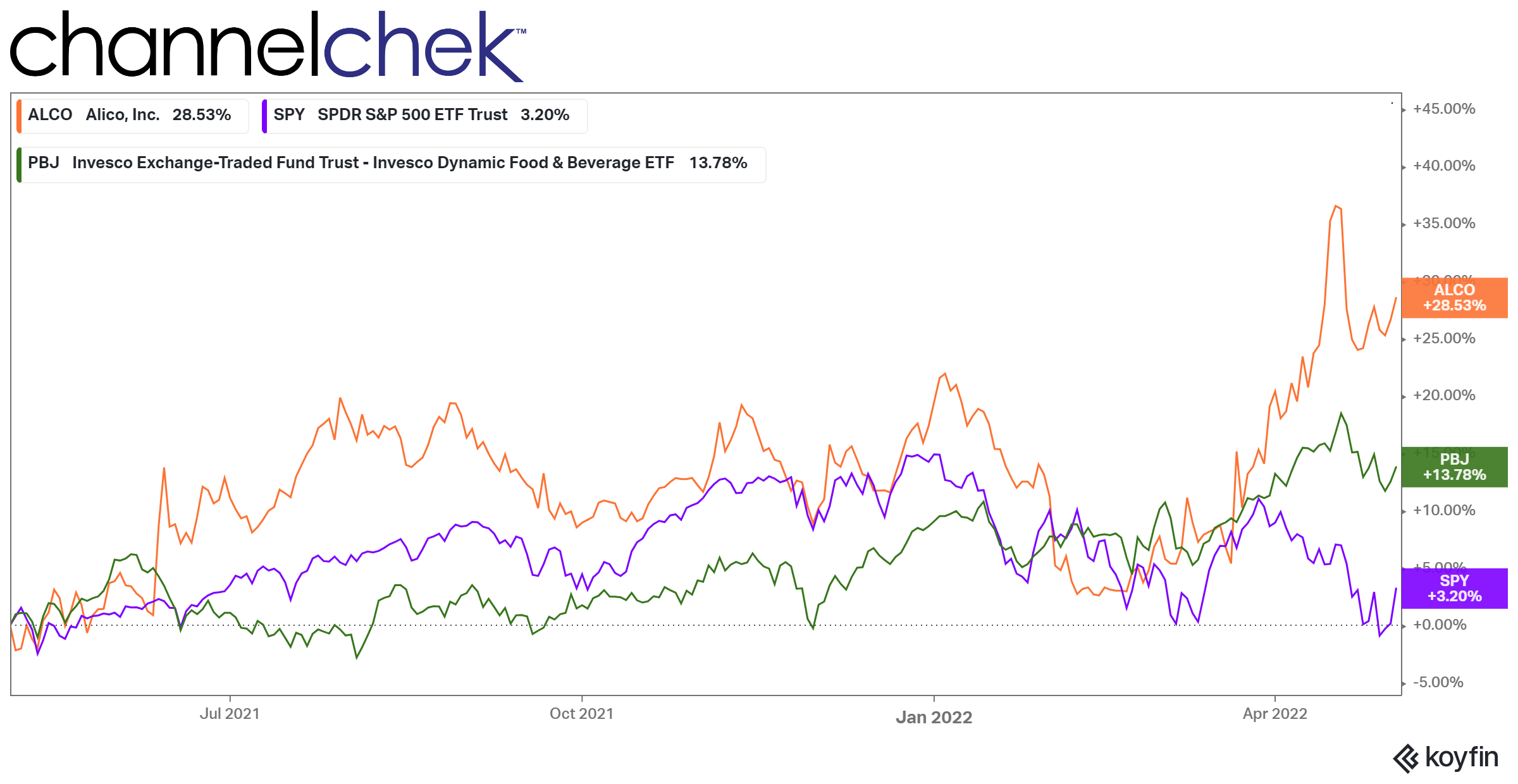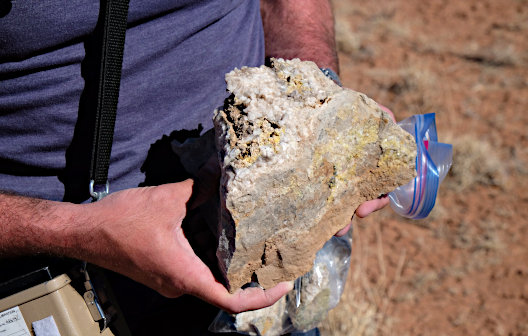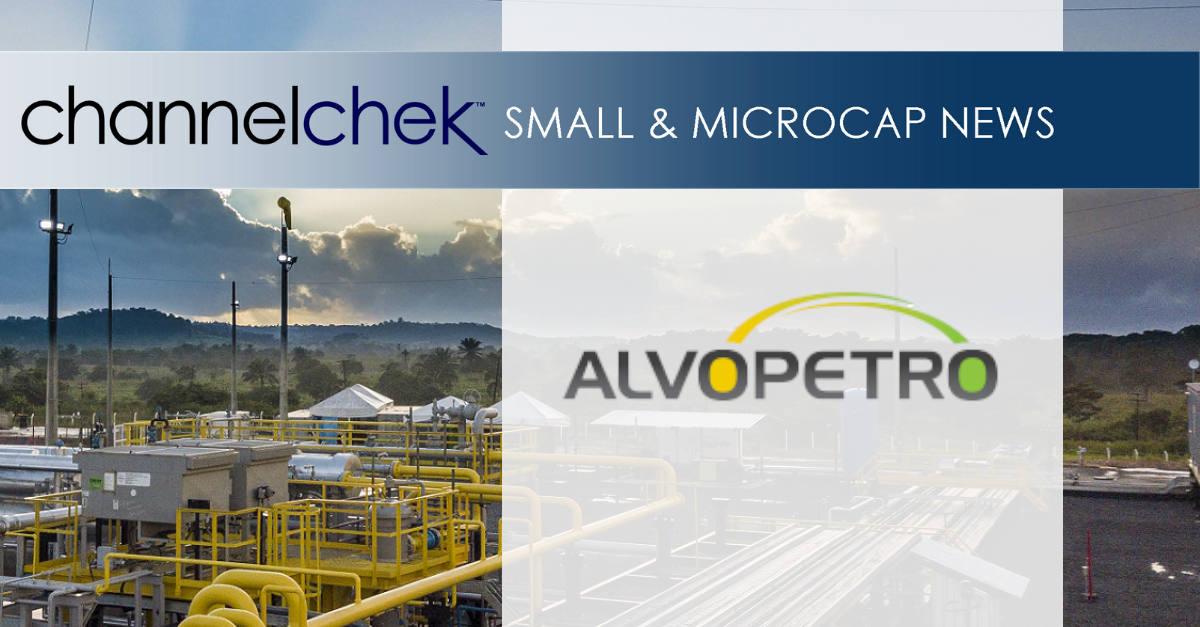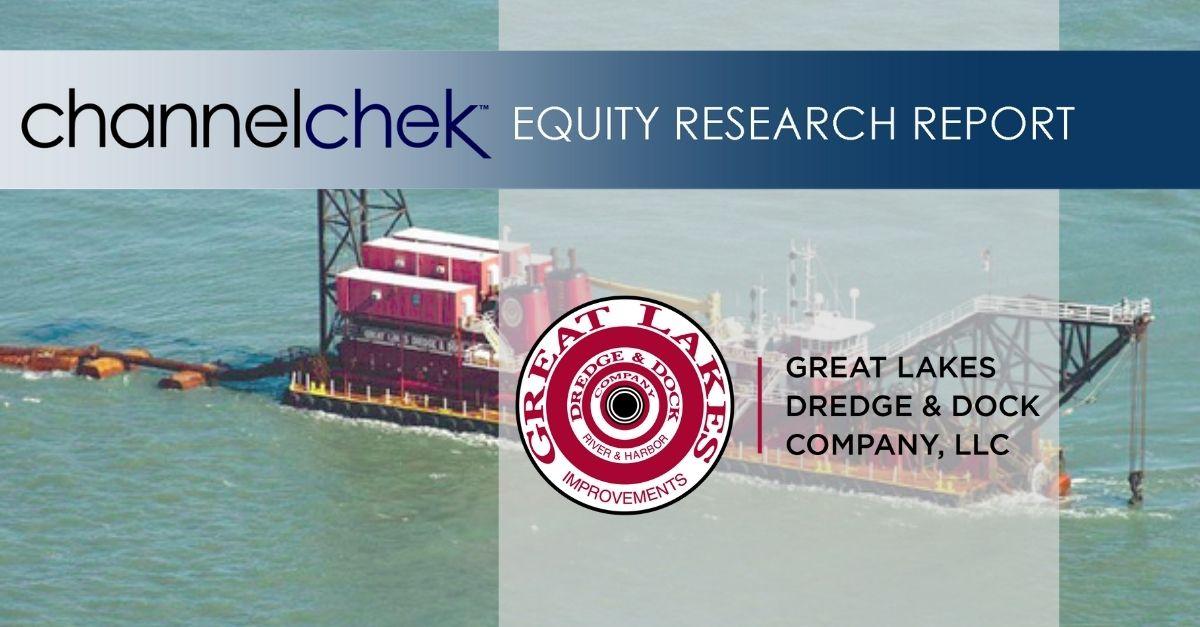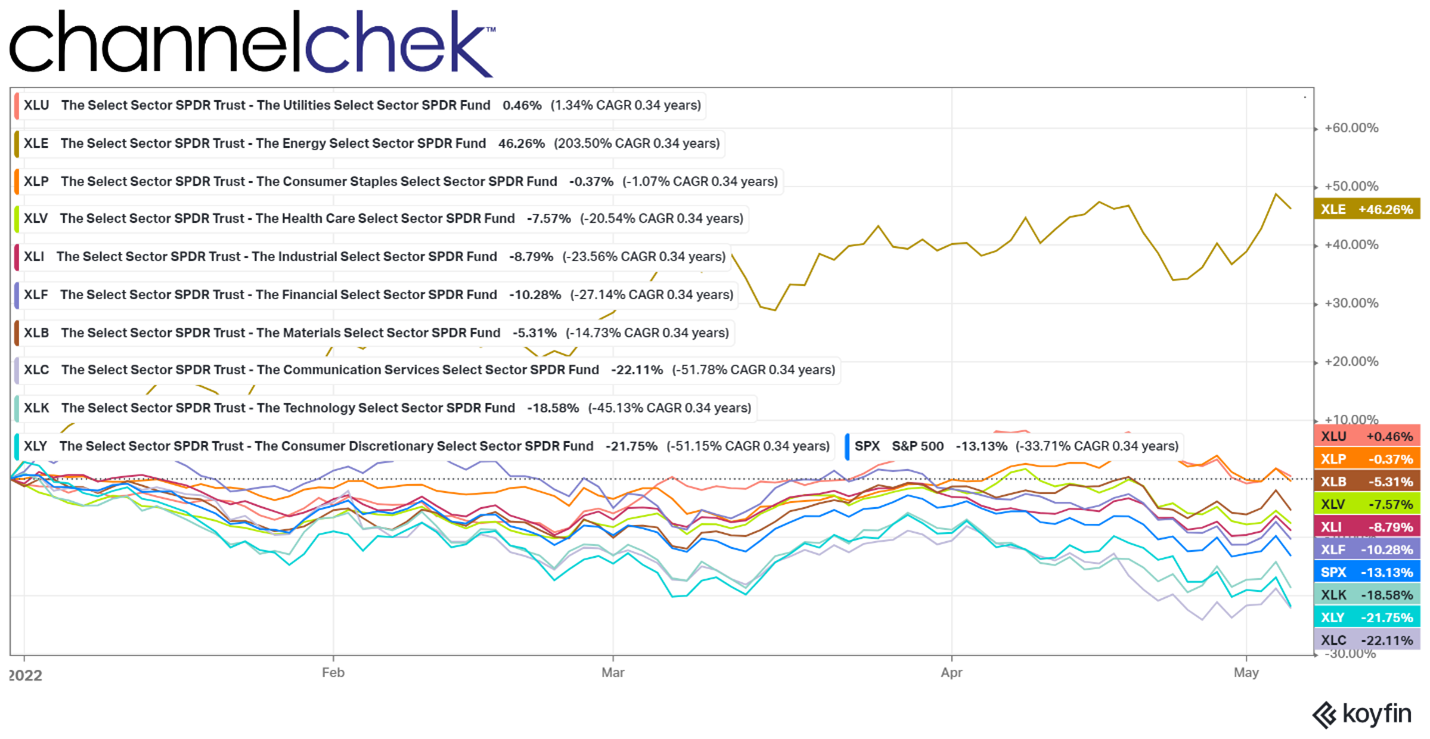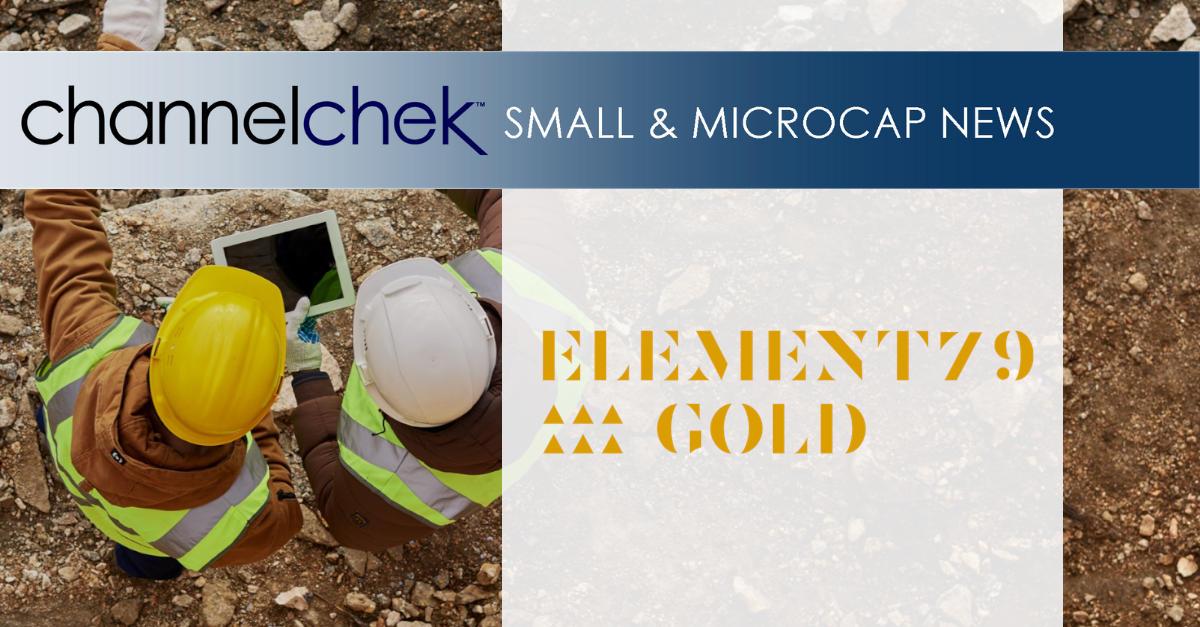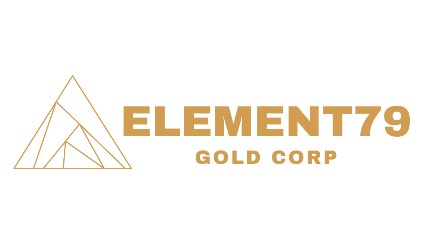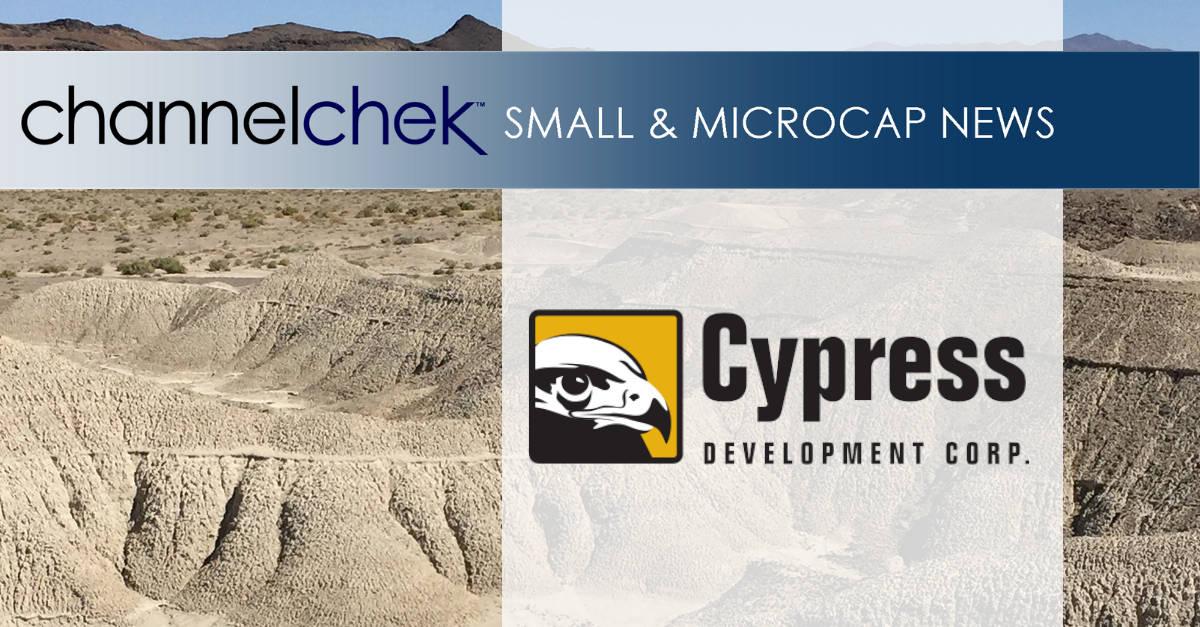Eagle Bulk Shipping Inc. Reports Results for the First Quarter of 2022
Research, News, and Market Data on Eagle Bulk Shipping
STAMFORD, Conn., May 05, 2022 (GLOBE NEWSWIRE) — Eagle Bulk Shipping Inc. (NASDAQ: EGLE) (“Eagle Bulk,” “Eagle” or the “Company”), one of the world’s largest owner-operators within the midsize drybulk vessel segment, today reported financial results for the quarter ended March 31, 2022.
Quarter highlights:
- Generated Revenues, net of $184.4 million
- Achieved TCE
(1) of $27,407/day basis TCE Revenue(1) of $121.6 million
- Realized net income of $53.1 million, or $4.09 per basic share
- Adjusted net income(1) of $64.5 million, or $4.97 per adjusted basic share(1)
- Generated EBITDA
(1) of $72.1 million - Adjusted EBITDA
(1) of $85.0 million
- Declared a quarterly dividend of $2.00 per share for the first quarter of 2022. Payable on May 25, 2022 to shareholders of record at the close of business on May 16, 2022
Recent Developments:
- Looking ahead, as of May 3, 2022, our coverage position is as follows:
- Q2 2022 – 83% of available days fixed at an average TCE of $29,300
Eagle’s CEO Gary Vogel commented, “Over the past few months, the tragic situation in Ukraine has had a direct impact on our industry and our Company, with cargo trading patterns being disrupted and altered. Furthermore, a significant number of our seafarer colleagues are from Ukraine, and they are all affected by what is happening to their country and their loved ones. The safety and well-being of our crew is of paramount importance, and we are focused on supporting them during this difficult time by providing assistance with temporary housing, transportation, and helping with other needs.
Notwithstanding a volatile rate environment, Eagle posted strong results in the first quarter, in what is typically the weakest period of the year. We achieved a TCE of $27,407 per day, generating an adjusted net income of $65 million for the quarter. Based on this result and our expectations for continued strong performance, Eagle’s Board declared a first quarter dividend of $2.00 per share, bringing total distributions to over $6 per share since we initiated our dividend program just seven months ago.
Demand growth for minor bulks remains healthy and continues to outpace demand for the broader drybulk market, resulting in Supramax/Ultramax vessels outperforming the larger dry bulk segments. Voyage distances have also increased, driven primarily by dislocations caused by the war in Ukraine, which has in turn helped to strengthen spot rates. On the back of this and our active management approach to trading, Eagle has thus far procured approximately 83% of its available days for the second quarter at a net TCE of $29,300 per day.”
|
1 |
These are non-GAAP financial measures. A reconciliation of GAAP to non-GAAP financial measures has been provided in the financial tables included in this press release. An explanation of these measures and how they are calculated are also included below under the heading “Supplemental Information – Non-GAAP Financial Measures.” |
Fleet Operating Data
|
|
|
Three Months Ended |
||||
|
|
|
March 31, 2022 |
|
March 31, 2021 |
||
|
Ownership Days |
|
4,770 |
|
|
4,199 |
|
|
Chartered in Days |
|
960 |
|
|
658 |
|
|
Available Days |
|
5,397 |
|
|
4,648 |
|
|
Operating Days |
|
5,381 |
|
|
4,622 |
|
|
Fleet Utilization (%) |
|
99.7 |
% |
|
99.4 |
% |
Results of Operations for
the three months ended March 31, 2022 and 2021
For the three months ended March 31, 2022, the Company reported net income of $53.1 million, or basic and diluted income of $4.09 per share and $3.27 per share, respectively. In the comparable quarter of 2021, the Company reported net income of $9.8 million, or basic and diluted income of $0.84 per share.
For the three months ended March 31, 2022, the Company reported an adjusted net income of $64.5 million, which excludes unrealized losses on derivative instruments of $11.4 million, or basic and diluted adjusted net income of $4.97 per share and $3.97 per share, respectively. In the comparable quarter of 2021, the Company reported adjusted net income of $9.3 million, which excludes unrealized gains on derivative instruments of $0.5 million, or basic and diluted adjusted net income of $0.80 per share.
Revenues, net
Revenues, net for the three months ended March 31, 2022 were $184.4 million compared to $96.6 million in the comparable quarter in 2021. The increase in revenues was primarily attributable to higher charter rates as a result of the market recovery with increase in demand for drybulk products.
Voyage expenses
Voyage expenses for the three months ended March 31, 2022 were $43.6 million compared to $26.6 million in the comparable quarter in 2021. The increase in voyage expenses was primarily due to an increase in bunker consumption expense as bunker fuel prices increased in the first quarter, as well as an increase in voyage charter business and an increase in broker commission expense as a result of the increase in revenues.
Vessel operating expenses
Vessel operating expenses for the three months ended March 31, 2022 were $27.9 million compared to $21.5 million in the comparable quarter in 2021. The increase in vessel operating expenses was primarily attributable to higher owned days and an increase in vessel upgrades as a result of an increase in repairs and upgrades performed while vessels were in drydock. The Company continues to incur higher costs related to the delivery of stores and spares, as well as crew changes as a result of the ongoing COVID-19 pandemic. The ownership days for the three months ended March 31, 2022 and 2021 were 4,770 and 4,199, respectively.
Average daily vessel operating expenses excluding one-time, non-recurring expenses related to vessel acquisitions for the three months ended March 31, 2022 were $5,821 as compared to $4,894 for the three months ended March 31, 2021.
Charter hire expenses
Charter hire expenses for the three months ended March 31, 2022 were $22.7 million compared to $8.5 million in the comparable quarter in 2021. The increase in charter hire expenses was principally due to an increase in chartered-in days and an increase in charter hire rates due to improvement in the charter hire market. The total chartered-in days for the three months ended March 31, 2022 were 960 compared to 658 for the comparable quarter in the prior year. The Company currently charters in four Ultramax vessels on a long-term basis as of the charter-in commencement date with options to extend the charter period.
Depreciation and
amortization
Depreciation and amortization expense for the three months ended March 31, 2022 and 2021 was $14.6 million and $12.5 million, respectively. Total depreciation and amortization expense for the three months ended March 31, 2022 includes $11.7 million of vessel and other fixed asset depreciation and $2.9 million relating to the amortization of deferred drydocking costs. Comparable amounts for the three months ended March 31, 2021 were $10.5 million of vessel and other fixed asset depreciation and $2.0 million of amortization of deferred drydocking costs. The increase in depreciation expense is due to the acquisition of nine Ultramax vessels in 2021, offset by the sale of one vessel in the third quarter of 2021. The increase in amortization of deferred drydock costs is related to completing eleven drydocks since the first quarter of 2021.
General and administrative
expenses
General and administrative expenses for the three months ended March 31, 2022 and 2021 were $10.1 million and $7.7 million, respectively. General and administrative expenses include stock-based compensation of $1.5 million and $0.9 million for the three months ended March 31, 2022 and 2021, respectively. The increase in general and administrative expenses was mainly attributable to an increase in legal and consulting expenses, compensation and benefits, and stock-based compensation expense.
Other operating expense
Other operating expense for the three months ended March 31, 2022 and 2021 was $0.1 million and $1.0 million, respectively. In March 2021, the U.S. government began investigating an allegation that one of our vessels may have improperly disposed of ballast water that entered the engine room bilges during a repair. The Company posted a surety bond as security for any fines, penalties or associated costs that may be issued. Other operating expense consists of expenses relating to the incident, which include legal fees, surety bond expenses, vessel off-hire, crew changes and travel costs.
Interest expense
Interest expense for the three months ended March 31, 2022 and 2021 was $4.4 million and $8.3 million, respectively. The decrease in interest expense is primarily due to a decrease in outstanding debt and lower interest rates due to the refinancing of the Company’s debt in the fourth quarter of 2021.
Realized and unrealized
loss on derivative instruments, net
Realized and unrealized loss on derivative instruments, net for the three months ended March 31, 2022 and 2021 was $7.9 million and $0.7 million, respectively. The increase in realized and unrealized losses is primarily related to losses incurred on our freight forward agreements as a result of the increase in charter hire rates. The non-cash unrealized losses on forward freight agreements (“FFA”) for the remaining nine months of 2022 amounted to $14.3 million based on 2,520 days hedged at a weighted average FFA contract price of $20,942 per day.
The following table shows our open positions on FFAs as of March 31, 2022:
|
FFA Period |
Number of Days |
|
Average FFA |
|
|
Quarter ending June 30, 2022 |
405 |
|
$ |
16,672 |
|
Quarter ending September 30, 2022 |
1,125 |
|
|
22,503 |
|
Quarter ending December 31, 2022 |
990 |
|
|
20,914 |
Liquidity and Capital Resources
|
|
Three Months Ended |
||||||
|
(In thousands) |
March 31, 2022 |
|
March 31, 2021 |
||||
|
Net cash provided by operating activities |
$ |
42,254 |
|
|
$ |
14,333 |
|
|
Net cash used in investing activities |
|
(3,937 |
) |
|
|
(53,385 |
) |
|
Net cash (used in)/provided by financing activities (3) |
|
(40,862 |
) |
|
|
30,916 |
|
|
Net decrease in cash, cash equivalents and restricted cash |
|
(2,545 |
) |
|
|
(8,136 |
) |
|
Cash, cash equivalents and restricted cash at beginning of period |
|
86,222 |
|
|
|
88,849 |
|
|
Cash, cash equivalents and restricted cash at end of period |
$ |
83,677 |
|
|
$ |
80,713 |
|
|
(1) |
Net cash provided by operating activities for the three months ended March 31, 2022 and 2021 was $42.3 million and $14.3 million, respectively. The increase in cash flows provided by operating activities resulted primarily from the increase in revenues due to higher charter hire rates. |
|
|
|
|
(2) |
Net cash used in investing activities for the three months ended March 31, 2022 was $3.9 million, compared to $53.4 million in the comparable period in the prior year. During the three months ended March 31, 2022, the Company paid $3.5 million for the purchase of ballast water treatment systems on our fleet. Additionally, the Company paid $0.3 million for vessel improvements and $0.2 million for other fixed assets. |
|
|
|
|
(3) |
Net cash used in financing activities for the three months ended March 31, 2022 was $40.9 million compared to net cash provided by financing activities of $30.9 million in the comparable period in 2021. During the three months ended March 31, 2022, the Company repaid $12.5 million of the Global Ultraco Facility. The Company also paid $26.8 million in dividends and $1.9 million to settle net share equity awards. |
As of March 31, 2022, our cash and cash equivalents including restricted cash was $83.7 million compared to $86.2 million as of December 31, 2021.
As of March 31, 2022, the Company’s outstanding debt of $389.2 million which excludes debt discount and debt issuance costs consisted of $275.1 million under the Global Ultraco Debt Facility and $114.1 million under the Convertible Bond Debt.
In addition, as of March 31, 2022, we had $100.0 million in an undrawn revolver facility available under the Global Ultraco Debt Facility.
We continuously evaluate potential transactions that we believe will be accretive to earnings, enhance shareholder value or are in the best interests of the Company, including without limitation, business combinations, the acquisition of vessels or related businesses, repayment or refinancing of existing debt, the issuance of new securities, share repurchases or other transactions.
Capital Expenditures and
Drydocking
Our capital expenditures relate to the purchase of vessels and capital improvements to our vessels, which are expected to enhance the revenue earning capabilities and safety of the vessels.
In addition to acquisitions that we may undertake in future periods, the Company’s other major capital expenditures include funding the Company’s program of regularly scheduled drydocking necessary to comply with international shipping standards and environmental laws and regulations. Although the Company has some flexibility regarding the timing of its drydocking, the costs are relatively predictable. Management anticipates that vessels are to be drydocked every two and a half years for vessels older than 15 years and five years for vessels younger than 15 years. Funding of these requirements is anticipated to be met with cash from operations. We anticipate that this process of recertification will require us to reposition these vessels from a discharge port to shipyard facilities, which will reduce our available days and operating days during that period.
Drydocking costs incurred are deferred and amortized to expense on a straight-line basis over the period through the date of the next scheduled drydocking for those vessels. In the three months ended March 31, 2022, four of our vessels completed drydock and one vessel was in drydock as of March 31, 2022, and we incurred drydocking expenditures of $10.8 million. In the three months ended March 31, 2021, four of our vessels completed drydock and we incurred drydocking expenditures of $4.8 million.
The following table represents certain information about the estimated costs for anticipated vessel drydockings, ballast water treatment systems (“BWTS”), and vessel upgrades in the next four quarters, along with the anticipated off-hire days:
|
|
|
Projected Costs (1) (in millions) |
|||||
|
Quarter Ending |
Off-hire Days(2) |
BWTS |
Drydocks |
Vessel Upgrades(3) |
|||
|
June 30, 2022 |
213 |
$ |
0.5 |
$ |
3.1 |
$ |
0.6 |
|
September 30, 2022 |
139 |
|
0.3 |
|
2.7 |
|
0.2 |
|
December 31, 2022 |
118 |
|
0.6 |
|
2.1 |
|
0.2 |
|
March 31, 2023 |
120 |
|
0.1 |
|
2.6 |
|
0.4 |
|
(1) |
Actual costs will vary based on various factors, including where the drydockings are actually performed. |
|
|
|
|
(2) |
Actual duration of off-hire days will vary based on the age and condition of the vessel, yard schedules and other factors. |
|
|
|
|
(3) |
Vessel upgrades represents capex relating to items such as high-spec low friction hull paint which improves fuel efficiency and reduces fuel costs, NeoPanama Canal chock fittings enabling vessels to carry additional cargo through the new Panama Canal locks, as well as other retrofitted fuel-saving devices. Vessel upgrades are discretionary in nature and evaluated on a business case-by-case basis. |
SUMMARY CONSOLIDATED FINANCIAL AND OTHER DATA
The following table summarizes the Company’s selected condensed consolidated financial and other data for the periods indicated below.
CONDENSED CONSOLIDATED STATEMENTS OF OPERATIONS
For the Three Months Ended March 31, 2022 and 2021
(In thousands, except share and per share data)
|
|
Three Months Ended |
||||||
|
|
March 31, 2022 |
|
March 31, 2021 |
||||
|
Revenues, net |
$ |
184,398 |
|
|
$ |
96,572 |
|
|
|
|
|
|
||||
|
Voyage expenses |
|
43,627 |
|
|
|
26,615 |
|
|
Vessel operating expenses |
|
27,915 |
|
|
|
21,519 |
|
|
Charter hire expenses |
|
22,711 |
|
|
|
8,480 |
|
|
Depreciation and amortization |
|
14,580 |
|
|
|
12,506 |
|
|
General and administrative expenses |
|
10,054 |
|
|
|
7,698 |
|
|
Other operating expense |
|
133 |
|
|
|
961 |
|
|
Total operating expenses |
|
119,020 |
|
|
|
77,779 |
|
|
Operating income |
|
65,378 |
|
|
|
18,793 |
|
|
Interest expense |
|
4,447 |
|
|
|
8,251 |
|
|
Interest income |
|
(45 |
) |
|
|
(17 |
) |
|
Realized and unrealized loss on derivative instruments, net |
|
7,903 |
|
|
|
710 |
|
|
Total other expense, net |
|
12,305 |
|
|
|
8,944 |
|
|
Net income |
$ |
53,073 |
|
|
$ |
9,849 |
|
|
|
|
|
|
||||
|
Weighted average shares outstanding: |
|
|
|
||||
|
Basic |
|
12,974,125 |
|
|
|
11,729,492 |
|
|
Diluted |
|
16,254,898 |
|
|
|
11,744,568 |
|
|
|
|
|
|
||||
|
Per share amounts: |
|
|
|
||||
|
Basic net income |
$ |
4.09 |
|
|
$ |
0.84 |
|
|
Diluted net income |
$ |
3.27 |
|
|
$ |
0.84 |
|
CONDENSED CONSOLIDATED BALANCE SHEETS
March 31, 2022 and December 31, 2021
(In thousands, except share data and par values)
|
|
March 31, 2022 |
|
December 31, 2021 |
||||
|
ASSETS: |
|
|
|
||||
|
Current assets: |
|
|
|
||||
|
Cash and cash equivalents |
$ |
83,602 |
|
|
$ |
86,147 |
|
|
Accounts receivable, net of a reserve of $1,837 and $1,818, respectively |
|
40,918 |
|
|
|
28,456 |
|
|
Prepaid expenses |
|
5,278 |
|
|
|
3,362 |
|
|
Inventories |
|
27,771 |
|
|
|
17,651 |
|
|
Collateral on derivatives |
|
21,307 |
|
|
|
15,081 |
|
|
Fair value of derivative assets – current |
|
5,516 |
|
|
|
4,669 |
|
|
Other current assets |
|
797 |
|
|
|
667 |
|
|
Total current assets |
|
185,189 |
|
|
|
156,033 |
|
|
Noncurrent assets: |
|
|
|
||||
|
Vessels and vessel improvements, at cost, net of accumulated depreciation of $230,318 and $218,670, respectively |
|
900,920 |
|
|
|
908,076 |
|
|
Operating lease right-of-use assets |
|
18,654 |
|
|
|
17,017 |
|
|
Other fixed assets, net of accumulated depreciation of $1,452 and $1,403, respectively |
|
368 |
|
|
|
257 |
|
|
Restricted cash – noncurrent |
|
75 |
|
|
|
75 |
|
|
Deferred drydock costs, net |
|
44,985 |
|
|
|
37,093 |
|
|
Fair value of derivative assets – noncurrent |
|
8,476 |
|
|
|
3,112 |
|
|
Advances for ballast water systems and other assets |
|
3,920 |
|
|
|
4,995 |
|
|
Total noncurrent assets |
|
977,398 |
|
|
|
970,625 |
|
|
Total assets |
$ |
1,162,587 |
|
|
$ |
1,126,658 |
|
|
LIABILITIES & STOCKHOLDERS’ |
|
|
|
||||
|
Current liabilities: |
|
|
|
||||
|
Accounts payable |
$ |
23,396 |
|
|
$ |
20,781 |
|
|
Accrued interest |
|
1,512 |
|
|
|
2,957 |
|
|
Other accrued liabilities |
|
18,815 |
|
|
|
17,994 |
|
|
Fair value of derivative liabilities – current |
|
13,111 |
|
|
|
4,253 |
|
|
Current portion of operating lease liabilities |
|
15,749 |
|
|
|
15,728 |
|
|
Unearned charter hire revenue |
|
12,746 |
|
|
|
12,088 |
|
|
Current portion of long-term debt |
|
49,800 |
|
|
|
49,800 |
|
|
Total current liabilities |
|
135,129 |
|
|
|
123,601 |
|
|
Noncurrent liabilities: |
|
|
|
||||
|
Global Ultraco Debt Facility, net of debt issuance costs |
|
217,245 |
|
|
|
229,290 |
|
|
Convertible Bond Debt, net of debt discount and debt issuance costs |
|
113,150 |
|
|
|
100,954 |
|
|
Noncurrent portion of operating lease liabilities |
|
2,899 |
|
|
|
1,282 |
|
|
Other noncurrent accrued liabilities |
|
395 |
|
|
|
265 |
|
|
Total noncurrent liabilities |
|
333,689 |
|
|
|
331,791 |
|
|
Total liabilities |
|
468,818 |
|
|
|
455,392 |
|
|
Commitments and contingencies |
|
|
|
||||
|
|
|
|
|
||||
|
Stockholders’ equity: |
|
|
|
||||
|
Preferred stock, $0.01 par value, 25,000,000 shares authorized, none issued as of March 31, 2022 and December 31, 2021 |
|
— |
|
|
|
— |
|
|
Common stock, $0.01 par value, 700,000,000 shares authorized, 12,985,994 and 12,917,027 shares issued and outstanding as of March 31, 2022 and December 31, 2021, respectively |
|
130 |
|
|
|
129 |
|
|
Additional paid-in capital |
|
961,930 |
|
|
|
982,746 |
|
|
Accumulated deficit |
|
(278,858 |
) |
|
|
(313,495 |
) |
|
Accumulated other comprehensive income |
|
10,567 |
|
|
|
1,886 |
|
|
Total stockholders’ equity |
|
693,769 |
|
|
|
671,266 |
|
|
Total liabilities and |
$ |
1,162,587 |
|
|
$ |
1,126,658 |
|
CONDENSED CONSOLIDATED STATEMENTS OF CASH FLOWS
For the Three Months Ended March 31, 2022 and 2021
(In thousands)
|
|
Three Months Ended |
||||||
|
|
March 31, 2022 |
|
March 31, 2021 |
||||
|
Cash flows from operating |
|
|
|
||||
|
Net income |
$ |
53,073 |
|
|
$ |
9,849 |
|
|
Adjustments to reconcile net |
|
|
|
||||
|
Depreciation |
|
11,697 |
|
|
|
10,507 |
|
|
Amortization of operating lease right-of-use assets |
|
5,706 |
|
|
|
3,080 |
|
|
Amortization of deferred drydocking costs |
|
2,883 |
|
|
|
1,999 |
|
|
Amortization of debt discount and debt issuance costs |
|
567 |
|
|
|
1,629 |
|
|
Net unrealized loss/(gain) on fair value of derivatives |
|
11,450 |
|
|
|
(503 |
) |
|
Stock-based compensation expense |
|
1,487 |
|
|
|
872 |
|
|
Drydocking expenditures |
|
(10,774 |
) |
|
|
(4,821 |
) |
|
Changes in operating assets and |
|
|
|
||||
|
Accounts payable |
|
3,010 |
|
|
|
6,488 |
|
|
Accounts receivable |
|
(12,462 |
) |
|
|
(6,697 |
) |
|
Accrued interest |
|
(1,445 |
) |
|
|
2,150 |
|
|
Inventories |
|
(10,120 |
) |
|
|
(3,096 |
) |
|
Operating lease liabilities current and noncurrent |
|
(5,706 |
) |
|
|
(3,302 |
) |
|
Collateral on derivatives |
|
(6,226 |
) |
|
|
— |
|
|
Fair value of derivatives, other current and noncurrent assets |
|
(252 |
) |
|
|
(5,743 |
) |
|
Other accrued liabilities |
|
623 |
|
|
|
159 |
|
|
Prepaid expenses |
|
(1,916 |
) |
|
|
(308 |
) |
|
Unearned charter hire revenue |
|
659 |
|
|
|
2,070 |
|
|
Net cash provided by operating |
|
42,254 |
|
|
|
14,333 |
|
|
|
|
|
|
||||
|
Cash flows from investing |
|
|
|
||||
|
Purchase of vessels and vessel improvements |
|
(283 |
) |
|
|
(47,977 |
) |
|
Advances for vessel purchases |
|
— |
|
|
|
(4,720 |
) |
|
Purchase of scrubbers and ballast water systems |
|
(3,494 |
) |
|
|
(755 |
) |
|
Proceeds from hull and machinery insurance claims |
|
— |
|
|
|
75 |
|
|
Purchase of other fixed assets |
|
(160 |
) |
|
|
(8 |
) |
|
Net cash used in investing |
|
(3,937 |
) |
|
|
(53,385 |
) |
|
|
|
|
|
||||
|
Cash flows from financing |
|
|
|
||||
|
Repayment of term loan under New Ultraco Debt Facility |
|
— |
|
|
|
(7,811 |
) |
|
Repayment of revolver loan under Super Senior Facility |
|
— |
|
|
|
(15,000 |
) |
|
Proceeds from revolver loan under New Ultraco Debt Facility |
|
— |
|
|
|
55,000 |
|
|
Repayment of term loan under Global Ultraco Debt Facility |
|
(12,450 |
) |
|
|
— |
|
|
Cash received from exercise of stock options |
|
85 |
|
|
|
— |
|
|
Cash used to settle net share equity awards |
|
(1,862 |
) |
|
|
(811 |
) |
|
Equity offerings issuance costs |
|
201 |
|
|
|
(292 |
) |
|
Financing costs paid to lenders |
|
(18 |
) |
|
|
(170 |
) |
|
Dividends paid |
|
(26,818 |
) |
|
|
— |
|
|
Net cash (used in)/provided by |
|
(40,862 |
) |
|
|
30,916 |
|
|
|
|
|
|
||||
|
Net decrease in Cash, cash equivalents and restricted cash |
|
(2,545 |
) |
|
|
(8,136 |
) |
|
Cash, cash equivalents and restricted cash at beginning of period |
|
86,222 |
|
|
|
88,849 |
|
|
Cash, cash equivalents and |
$ |
83,677 |
|
|
$ |
80,713 |
|
|
SUPPLEMENTAL CASH FLOW INFORMATION |
|
|
|
||||
|
Cash paid during the period for interest |
$ |
4,791 |
|
|
$ |
4,320 |
|
|
Accruals for vessel purchases and vessel improvements included in Other accrued liabilities |
$ |
70 |
|
|
$ |
244 |
|
|
Accruals for scrubbers and ballast water treatment systems included in Accounts payable and Other accrued liabilities |
$ |
2,943 |
|
|
$ |
3,153 |
|
|
Accruals for dividends payable included in Other accrued liabilities and Other noncurrent accrued liabilities |
$ |
785 |
|
|
$ |
— |
|
|
Accruals for debt issuance costs included in Accounts payable and Other accrued liabilities |
$ |
— |
|
|
$ |
250 |
|
Supplemental Information – Non-GAAP Financial Measures
This release includes various financial measures that are non-GAAP financial measures as defined under the rules of the Securities and Exchange Commission (“SEC”). We believe these measures provide important supplemental information to investors to use in evaluating ongoing operating results. We use these measures, together with accounting principles generally accepted in the United States (“GAAP” or “U.S. GAAP”) measures, for internal managerial purposes and as a means to evaluate period-to-period comparisons. However, we do not, and you should not, rely on non-GAAP financial measures alone as measures of our performance. We believe that non-GAAP financial measures reflect an additional way of viewing aspects of our operations, that when taken together with GAAP results and the reconciliations to corresponding GAAP financial measures that we also provide in our press releases, provide a more complete understanding of factors and trends affecting our business. We strongly encourage you to review all of our financial statements and publicly-filed reports in their entirety and to not rely on any single financial measure.
Because non-GAAP financial measures are not standardized, it may not be possible to compare these financial measures with other companies’ non-GAAP financial measures, even if they have similar names.
Non-GAAP Financial Measures
(1) Adjusted net income and
Adjusted Basic and Diluted income per share
Adjusted net income and Adjusted Basic and Diluted income per share represents Net income and Basic and Diluted income per share, respectively, as adjusted to exclude non-cash unrealized losses/(gains) on derivatives and loss on debt extinguishment. The Company utilizes derivative instruments such as FFAs to partially hedge against its underlying long physical position in ships (as represented by owned and third-party chartered-in vessels). The Company does not apply hedge accounting, and, as such, the mark-to-market gains/(losses) on forward hedge positions impact current quarter results, causing timing mismatches in the Condensed Consolidated Statement of Operations. Additionally, we believe that loss on debt extinguishment is not representative of our normal business operations. We believe that Adjusted net income and Adjusted income per share are more useful to analysts and investors in comparing the results of operations and operational trends between periods and relative to other peer companies in our industry. Our Adjusted net income should not be considered an alternative to net income, operating income, cash flows provided by operating activities or any other measure of financial performance or liquidity presented in accordance with U.S. GAAP. As noted above, our Adjusted net income may not be comparable to similarly titled measures of another company because all companies may not calculate Adjusted net income in the same manner.
The following table presents the reconciliation of our Net income to Adjusted net income:
Reconciliation of GAAP Net income to Adjusted Net income
For the Three Months Ended March 31, 2022 and 2021
(In thousands, except share and per share data)
|
|
|
Three Months Ended |
|||||
|
|
|
March 31, 2022 |
|
March 31, 2021 |
|||
|
Net income |
|
$ |
53,073 |
|
$ |
9,849 |
|
|
Adjustments to reconcile net income to Adjusted net income: |
|
|
|
|
|||
|
Unrealized loss/(gain) on derivatives |
|
|
11,450 |
|
|
(503 |
) |
|
Adjusted Net income |
|
$ |
64,523 |
|
$ |
9,346 |
|
|
|
|
|
|
|
|||
|
Weighted average shares outstanding: |
|
|
|
|
|||
|
Basic |
|
|
12,974,125 |
|
|
11,729,492 |
|
|
Diluted (1) |
|
|
16,254,898 |
|
|
11,744,568 |
|
|
|
|
|
|
|
|||
|
Per share amounts: |
|
|
|
|
|||
|
Basic adjusted net income |
|
$ |
4.97 |
|
$ |
0.80 |
|
|
Diluted adjusted net income(1) |
|
$ |
3.97 |
|
$ |
0.80 |
|
|
(1) |
The number of shares used in the Diluted income per share and Diluted adjusted net income per share calculation for the three months ended March 31, 2022 includes 3,150,381 dilutive shares related to the Convertible Bond Debt based on the if-converted method per U.S. GAAP in addition to the restricted stock awards and restricted stock units based on the Treasury stock method. |
|
|
|
|
(2) |
EBITDA |
We define EBITDA as net income under GAAP adjusted for interest, income taxes, depreciation and amortization.
Adjusted EBITDA is a non-GAAP financial measure that is used as a supplemental financial measure by our management and by external users of our financial statements, such as investors, commercial banks and others, to assess our operating performance as compared to that of other companies in our industry, without regard to financing methods, capital structure or historical costs basis. Our Adjusted EBITDA should not be considered an alternative to net income/(loss), operating income/(loss), cash flows provided by/(used in) operating activities or any other measure of financial performance or liquidity presented in accordance with U.S. GAAP. Our Adjusted EBITDA may not be comparable to similarly titled measures of another company because all companies may not calculate Adjusted EBITDA in the same manner. Adjusted EBITDA represents EBITDA adjusted to exclude the items which represent certain non-cash, one-time and other items such as vessel impairment, gain/(loss) on sale of vessels, impairment of operating lease right-of-use assets, unrealized (gain)/loss on derivatives, loss on debt extinguishment and stock-based compensation expenses that the Company believes are not indicative of the ongoing performance of its core operations.
The following table presents a reconciliation of our net income to EBITDA and Adjusted EBITDA:
Reconciliation of GAAP Net income to EBITDA and Adjusted EBITDA
For the Three Months Ended March 31, 2022 and 2021
(In thousands)
|
|
|
Three Months Ended |
||||||
|
|
|
March 31, 2022 |
|
March 31, 2021 |
||||
|
Net income |
|
$ |
53,073 |
|
|
$ |
9,849 |
|
|
Adjustments to reconcile net income to EBITDA: |
|
|
|
|
||||
|
Interest expense |
|
|
4,447 |
|
|
|
8,251 |
|
|
Interest income |
|
|
(45 |
) |
|
|
(17 |
) |
|
Income taxes |
|
|
— |
|
|
|
— |
|
|
EBIT |
|
|
57,475 |
|
|
|
18,083 |
|
|
Depreciation and amortization |
|
|
14,580 |
|
|
|
12,506 |
|
|
EBITDA |
|
|
72,055 |
|
|
|
30,589 |
|
|
Non-cash, one-time and other adjustments to EBITDA(1) |
|
|
12,937 |
|
|
|
369 |
|
|
Adjusted EBITDA |
|
$ |
84,992 |
|
|
$ |
30,958 |
|
|
(1) |
One-time and other adjustments to EBITDA for the three months ended March 31, 2022 includes stock-based compensation and unrealized losses on derivatives. One-time and other adjustments to EBITDA for the three months ended March 31, 2021 includes stock-based compensation and unrealized gains on derivatives. |
|
|
|
|
(3) |
TCE |
Time charter equivalent (“TCE”) is a non-GAAP financial measure that is commonly used in the shipping industry primarily to compare daily earnings generated by vessels on time charters with daily earnings generated by vessels on voyage charters, because charter hire rates for vessels on voyage charters are generally not expressed in per-day amounts while charter hire rates for vessels on time charters generally are expressed in such amounts. The Company defines TCE as shipping revenues less voyage expenses and charter hire expenses, adjusted for realized gains/(losses) on FFAs and bunker swaps, divided by the number of owned available days. TCE provides additional meaningful information in conjunction with shipping revenues, the most directly comparable GAAP measure, because it assists Company management in making decisions regarding the deployment and use of its vessels and in evaluating their financial performance. The Company’s calculation of TCE may not be comparable to that reported by other companies. The Company calculates relative performance by comparing TCE against the Baltic Supramax Index (“BSI”) adjusted for commissions and fleet makeup. Owned available days is the number of our ownership days less the aggregate number of days that our vessels are off-hire due to vessel familiarization upon acquisition, repairs, vessel upgrades or special surveys. The shipping industry uses available days to measure the number of days in a period during which vessels should be capable of generating revenues.
The following table presents the reconciliation of revenues, net to TCE:
Reconciliation of Revenues, net to TCE
For the Three Months Ended March 31, 2022 and 2021
(In thousands, except owned available days and TCE data)
|
|
Three Months Ended |
||||||
|
|
March 31, 2022 |
|
March 31, 2021 |
||||
|
Revenues, net |
$ |
184,398 |
|
|
$ |
96,572 |
|
|
Less: |
|
|
|
||||
|
Voyage expenses |
|
(43,627 |
) |
|
|
(26,615 |
) |
|
Charter hire expenses |
|
(22,711 |
) |
|
|
(8,480 |
) |
|
Reversal of one legacy time charter |
|
— |
|
|
|
83 |
|
|
Realized gain/(loss) on FFAs and bunker swaps |
|
3,547 |
|
|
|
(1,213 |
) |
|
TCE revenue |
$ |
121,607 |
|
|
$ |
60,347 |
|
|
|
|
|
|
||||
|
Owned available days |
|
4,437 |
|
|
|
3,990 |
|
|
TCE |
$ |
27,407 |
|
|
$ |
15,124 |
|
|
(1) |
Prior to the third quarter of 2021, the Company adjusted for the impact of one legacy time charter in the TCE revenue and TCE financial measures. |
Glossary of Terms:
Ownership days: We define ownership days as the aggregate number of days in a period during which each vessel in our fleet has been owned by us. Ownership days are an indicator of the size of our fleet over a period and affect both the amount of revenues and the amount of expenses that we recorded during a period.
Chartered-in under operating lease days: We define chartered-in under operating lease days as the aggregate number of days in a period during which we chartered-in vessels. Periodically, the Company charters in vessels on a single trip basis.
Available days: We define available days as the number of our ownership days and chartered-in days less the aggregate number of days that our vessels are off-hire due to vessel familiarization upon acquisition, repairs, vessel upgrades or special surveys and other reasons which prevent the vessel from performing under the relevant charter party such as surveys, medical events, stowaway disembarkation, etc. The shipping industry uses available days to measure the number of days in a period during which vessels should be capable of generating revenues.
Operating days: We define operating days as the number of available days in a period less the aggregate number of days that our vessels are off-hire due to any reason, including unforeseen circumstances. The shipping industry uses operating days to measure the aggregate number of days in a period during which vessels actually generate revenues.
Fleet utilization: We calculate fleet utilization by dividing the number of our operating days during a period by the number of our available days during the period. The shipping industry uses fleet utilization to measure a company’s efficiency in finding suitable employment for its vessels and minimizing the amount of days that its vessels are off-hire for reasons other than scheduled repairs or repairs under guarantee, vessel upgrades, special surveys or vessel positioning. Our fleet continues to perform at high utilization rates.
Definitions of capitalized terms related to our Indebtedness
Global Ultraco Debt Facility: Global Ultraco Debt Facility refers to the senior secured credit facility entered into by Ultraco on October 1, 2021, along with certain of its vessel-owning subsidiaries as guarantors, with the lenders party thereto (the “Lenders”), Credit Agricole Corporate and Investment Bank (“Credit Agricole”), Skandinaviska Enskilda Banken AB (PUBL), Danish Ship Finance A/S, Nordea Bank ABP, Filial I Norge, DNB Markets Inc., Deutsche Bank AG, and ING Bank N.V., London Branch. The Global Ultraco Debt Facility provides for an aggregate principal amount of $400.0 million, which consists of (i) a term loan facility in an aggregate principal amount of $300.0 million and (ii) a revolving credit facility in an aggregate principal amount of $100.0 million. The Global Ultraco Debt Facility is secured by 49 of the Company’s vessels. As of March 31, 2022, $100.0 million of the revolving credit facility remains undrawn.
Convertible Bond Debt: Convertible Bond Debt refers to $114.1 million that the Company raised from its issuance of 5.0% Convertible Senior Notes on July 29, 2019. They are due in 2024.
New Ultraco Debt Facility: New Ultraco Debt Facility refers to senior secured credit facility for $208.4 million entered into by Ultraco Shipping LLC (“Ultraco”), a wholly-owned subsidiary of the Company, as the borrower (the “New Ultraco Debt Facility”), with the Company and certain of its indirectly vessel-owning subsidiaries, as guarantors (the “Guarantors”), the lenders party thereto, the swap banks party thereto, ABN AMRO Capital USA LLC (“ABN AMRO”), Credit Agricole Corporate and Investment Bank, Skandinaviska Enskilda Banken AB (PUBL) and DNB Markets Inc., as mandated lead arrangers and bookrunners, and Credit Agricole Corporate and Investment Bank, as arranger, security trustee and facility agent. The New Ultraco Debt Facility was refinanced on October 1, 2021.
Super Senior Facility: Super Senior Facility refers to the credit facility for $15.0 million, by and among Shipco as borrower, and ABN AMRO Capital USA LLC, as original lender, mandated lead arranger and agent. During the third quarter of 2021, the Company cancelled the Super Senior Revolving Facility. There were no outstanding amounts under the facility.
Conference Call Information
As previously announced, members of Eagle Bulk’s senior management team will host a teleconference and webcast at 8:00 a.m. ET on Friday, May 6, 2022, to discuss the first quarter results.
To participate in the teleconference, investors and analysts are invited to call +1 844-282-4411 in the U.S., or +1 512-900-2336 outside of the U.S., and reference participant code 4384843. A simultaneous webcast of the call, including a slide presentation for interested investors and others, may be accessed by visiting http://www.eagleships.com.
A replay will be available following the call from 11:00 AM ET on May 6, 2022 until 11:00 AM ET on May 16, 2022. To access the replay, call +1 855-859-2056 in the U.S., or +1 404-537-3406 outside of the U.S., and reference passcode 4384843.
About Eagle Bulk Shipping Inc.
Eagle Bulk Shipping Inc. (“Eagle” or the “Company”) is a U.S. based fully integrated, shipowner-operator providing global transportation solutions to a diverse group of customers including miners, producers, traders, and end users. Headquartered in Stamford, Connecticut, with offices in Singapore and Copenhagen, Denmark, Eagle focuses exclusively on the versatile mid-size drybulk vessel segment and owns one of the largest fleets of Supramax/Ultramax vessels in the world. The Company performs all management services in-house (including: strategic, commercial, operational, technical, and administrative) and employs an active management approach to fleet trading with the objective of optimizing revenue performance and maximizing earnings on a risk-managed basis. For further information, please visit our website: www.eagleships.com.
Website Information
We intend to use our website,
www.eagleships.com, as a means of disclosing material non-public information and for complying with our disclosure obligations under Regulation FD. Such disclosures will be included in our website’s Investor Relations section. Accordingly, investors should monitor the Investor Relations portion of our website, in addition to following our press releases, filings with the SEC, public conference calls, and webcasts. To subscribe to our e-mail alert service, please click the “Investor Alerts” link in the Investor Relations section of our website and submit your email address. The information contained in, or that may be accessed through, our website is not incorporated by reference into or a part of this document or any other report or document we file with or furnish to the SEC, and any references to our website are intended to be inactive textual references only.
Disclaimer: Forward-Looking Statements
Matters discussed in this release may constitute forward-looking statements that may be deemed to be “forward-looking statements” within the meaning of Section 27A of the Securities Act of 1933, as amended, and Section 21E of the Securities Exchange Act of 1934, as amended. Forward-looking statements reflect current views with respect to future events and financial performance and may include statements concerning plans, objectives, goals, strategies, future events or performance, and underlying assumptions and other statements, which are other than statements of historical facts. These statements may include words such as “believe,” “estimate,” “project,” “intend,” “expect,” “plan,” “anticipate,” and similar expressions in connection with any discussion of the timing or nature of future operating or financial performance or other events.
The forward-looking statements in this release are based upon various assumptions, many of which are based, in turn, upon further assumptions, including without limitation, examination of historical operating trends, data contained in our records and other data available from third parties. Although Eagle Bulk Shipping Inc. believes that these assumptions were reasonable when made, because these assumptions are inherently subject to significant uncertainties and contingencies which are difficult or impossible to predict and are beyond our control, Eagle Bulk Shipping Inc. cannot assure you that it will achieve or accomplish these expectations, beliefs or projections.
Important factors that, in our view, could cause actual results to differ materially from those discussed in the forward-looking statements include the strength of world economies and currencies, general market conditions, including changes in charter hire rates and vessel values, changes as a result of COVID-19, including the availability and effectiveness of vaccines on a widespread basis and the impact of any mutations of the virus, changes in demand that may affect attitudes of time charterers to scheduled and unscheduled drydocking, changes in vessel operating expenses, including drydocking and insurance costs, or actions taken by regulatory authorities, ability of our counterparties to perform their obligations under sales agreements, charter contracts, and other agreements on a timely basis, potential liability from future litigation, domestic and international political conditions including the current conflict between Russia and Ukraine, which may impact our ability to retain and source crew, and in turn, could adversely affect our revenue, expenses and profitability, potential disruption of shipping routes due to accidents and political events or acts by terrorists.
Risks and uncertainties are further described in reports filed by Eagle Bulk Shipping Inc. with the SEC.
CONTACT
Company Contact:
Frank De Costanzo
Chief Financial Officer
Eagle Bulk Shipping Inc.
Tel. +1 203-276-8100
Email:
investor@eagleships.com
Media:
Rose and Company
Tel. +1 212-359-2228
——————————————————————————–
Source: Eagle Bulk Shipping Inc.
